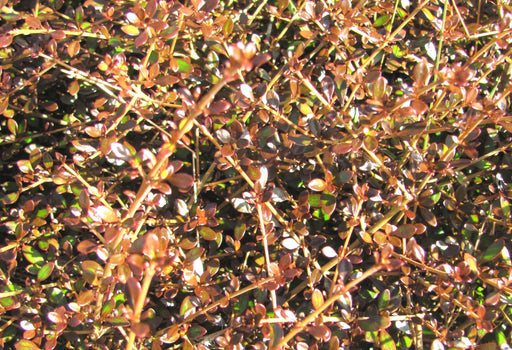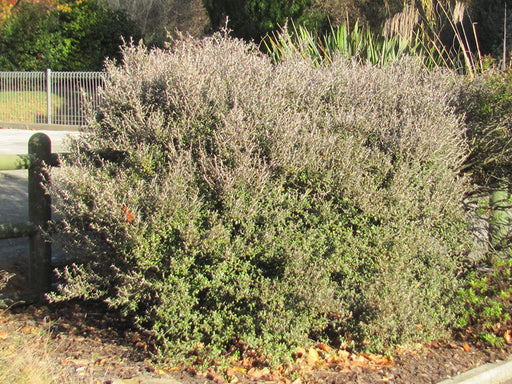Why Clay-Soil Sites Matter — and Why Choose Natives
Clay soils are common throughout New Zealand and present a distinctive set of challenges: the soil is often heavy, fine-textured, tends to compact, drains slowly, and can remain cold deep into spring. These characteristics — dense structure, poor drainage, and seasonal waterlogging or surface pooling — can make clay soil unforgiving for many garden plants, especially those that demand free drainage or dislike “wet feet.”
By contrast, a number of native New Zealand species are surprisingly well suited to clay soils. Many tolerate or even thrive in heavier, moisture-holding soils, bringing with them natural resilience, deep or fibrous root systems that help improve soil structure, and ecological value such as habitat and food for native birds and insects.
For gardeners facing heavy or clay-rich ground — whether urban sections, rural paddocks, gullies, or water-prone flats — choosing clay-tolerant natives offers a low-maintenance, sustainable, and ecologically positive landscaping option.
Choosing What to Plant: Match Plants to the Clay Soil Situation
Clay soil environments vary — from permanently wet flats and seasonal wetlands, to poorly drained gullies, to heavier but reasonably drained soils on terraces or slopes. What you plant should match the specific clay-soil conditions (wet, damp, seasonally damp, or heavy-but-draining).
Wet Flats & Seasonal Wet Areas
Conditions: soils that hold a lot of moisture, occasional waterlogging or ponding, seasonal wetness or fluctuating water levels.
Good native plant choices:
-
Good Native Plant Choices (from your plant list)
-
Carex dipsacea — Well suited to damp flats and low-lying clay areas, this sedge forms dense clumps that improve soil structure and reduce erosion in seasonally wet conditions.

-
Austroderia richardii (Toetoe) — A strong structural grass adapted to moist clay soils and open wet flats. Its deep root system improves soil stability and tolerates fluctuating water levels.

-
Coprosma robusta — A naturally occurring species in damp lowland forests, well adapted to moisture-retentive clay soils. Provides structure, shade, and ecological value in wetter zones.

Why These Plants Work
These species are naturally adapted to periodically saturated clay soils. Their root systems tolerate low-oxygen conditions caused by waterlogging, while also binding soil and reducing surface movement. Dense sedges such as Carex dipsacea help filter runoff and improve soil structure, while larger plants like Austroderia richardii and Coprosma robusta add long-term stability and resilience.
Together, these natives are ideal for wet flats, low-lying clay zones, drainage lines, and areas prone to seasonal inundation, creating durable, low-maintenance planting that aligns with New Zealand’s natural ecosystems.
-
Poorly Drained Slopes, Gullies & Moist Sheltered Clay Areas
Conditions: areas with limited drainage, shaded or semi-shaded gullies or slopes, clay that stays damp for extended periods, or areas where water drains slowly.
Good native plant choices:
-
Griselinia littoralis — hardy shrub/tree well suited to moist, heavier soils and ideal for shelter belts, gullies, or boundary plantings.
-
Pittosporum tenuifolium — a shrub that tolerates heavier soils and can adapt to damp but reasonably stable clay sites.

-
Pseudopanax crassifolius (or other hardy Pseudopanax species) — natives known for resilience and adaptability, often coping well with clay or compact soils.

-
Coprosma robusta — a versatile shrub/small tree that handles moist clay soils more successfully than many exotics, stabilising soil and adding structure.
Why these work: Their root systems cope with heavier soils, they tolerate periodic dampness, and many are naturally suited to the sheltered, moist microclimates common in gullies or sheltered clay slopes.
Heavier Clay Soils With Reasonable Drainage (Terraces, Urban Clay Garden Soil, Drier Clay-Based Sites)
Conditions: clay soils that don’t waterlog easily, or clay that’s been loosened or drains reasonably well; garden terraces, urban sections, or clay-based properties with moderate rainfall.
Good native plant choices:
-
Libertia ixiodes — A hardy, grass-like native that tolerates compacted and clay-rich soils. Works well as an understory or edging plant in clay-based garden beds.

-
Olearia paniculata — A tough, wind-tolerant shrub well suited to clay-based soils with moderate drainage. Its strong root system makes it reliable in both exposed and urban sites.
-
Ozothamnus leptophyllus (Tauhinu) — thrives in more marginal soil conditions and can tolerate heavier, less fertile substrates once established.

-
Libertia grandiflora — a hardy grass-like native that works well on heavier soils, useful in gardens with compacted or clay-based ground.

Why these work: They are tolerant of dense soil textures, are relatively undemanding, and able to establish in clay-based garden soils — making them reliable choices for urban gardens, terraces, or backyard landscaping on heavier soils.
Signature Clay-Soil Natives
These plants are especially dependable across a range of clay-soil conditions — from wet flats to heavier garden soils — and are often used as go-to species for challenging clay gardens:
-
Phormium tenax (Harakeke / NZ flax) — ideal for wet, poorly drained, or water-retentive clay soils, and great for edges, wetlands, or damp spots.

-
Carex secta (Makura) — tall sedge suited to swampy or seasonally wet clay soil, perfect for wetlands or damp patches.

-
Griselinia littoralis — hardy shrub/tree good for moist gullies, clay gullies or boundaries.

Practical Planting & Care Tips for Clay-Soil Sites
 1. Site Preparation & Soil Improvement
1. Site Preparation & Soil Improvement
Clay soil often compacts and drains poorly. Before planting, break up the soil to improve aeration and drainage — dig deeply or fork thoroughly to loosen dense soils. Where drainage is especially poor, consider planting on raised mounds or berms, or creating slightly raised beds, to help prevent waterlogging and root rot.
If the clay is heavy and compacted, mix in organic matter (compost, aged mulch, leaf-mould) to loosen structure, improve fertility, and enhance water-holding capacity without creating permanent waterlogging. This organic amendment also helps roots penetrate clay more easily and encourages soil microbes that benefit plant health.
2. Mulching
Apply a generous layer of organic mulch (e.g., bark chips, compost, leaf-mould) to help regulate soil moisture, reduce surface crusting, and slowly improve soil structure as the mulch breaks down. Mulch also helps suppress weeds, minimise bare soil exposure, and provide a buffer against extreme wet/dry cycles that clay soils often undergo.
In wetter clay zones (e.g., gullies, flats, low-lying clay land) avoid piling mulch directly against stems to reduce risk of fungal diseases or rot; keep a small clear zone around trunks or stems while still covering the surrounding soil.
3. Best Planting Time
Plant natives in early spring or early autumn — times when soil is more workable, moisture levels are moderate, and plants have time to establish roots before facing extremes of summer drought or winter saturation. For heavy clay soils, avoid planting right before long wet winters or during very dry spells to minimise stress on newly planted roots.
4. Watering and Establishment
Clay soil retains moisture for longer than sandy or free-draining soils, so in many cases supplemental watering may not be needed after planting. However, in very dry periods or following soil disturbance, check soil moisture and water deeply but sparingly — encourage deep root growth rather than watering shallowly and frequently.
If you’ve planted on raised mounds or improved drainage, ensure soil doesn’t dry out too quickly; monitor young plants and water as needed during dry spells until established.
5. Spacing, Grouping & Microclimates
Give plants enough room to grow — avoid overcrowding, which in heavy clay can worsen competition for limited aeration and water movement. In damp or poorly drained clay areas, plant species that tolerate moisture together (e.g., sedges, flax, shrubs for wet clay). In better-drained clay soils, use mixtures of shrubs, tussocks, and structural plants to create diversity and resilience.
If the site is part-hill or slope, plant in staggered rows or contour across the slope to reduce runoff, improve stability, and help water percolate more evenly. Over time, as plant root systems develop, soil structure tends to improve, drainage becomes more stable, and the overall garden becomes more resilient.
6. Long-Term Benefits of Clay-Tolerant Natives
Once established, clay-tolerant native plants often become low-maintenance and highly resilient, able to withstand variable moisture, seasonal wetness, and periods of dryness. Their root systems help break up clay over time, improving drainage and soil aeration; they stabilise soil and reduce erosion on slopes or slippery clay banks; and they provide habitat, shelter, and food for native fauna — from insects to birds.
Because they are adapted to challenging soil conditions, they offer a sustainable landscaping solution for heavy soil sites that many exotic garden plants struggle with. Over time, clay soil gardens planted with the right natives become easier to manage, more biodiverse, and more structurally stable than conventional gardens on poor soil.
Planning Your Clay-Soil Garden (Anywhere in NZ)
1. Survey Your Site
Check soil drainage, texture (heavy, compact, water-retentive), tendency to pool or water-log after rain, slope, aspect, sun exposure, and shelter.
2. Classify Your Clay Soil Zone
Decide if your site is:
-
a wet flat or seasonal wet zone,
-
a moist, poorly drained gully or slope,
-
or a heavier clay soil with reasonable drainage (terrace, urban garden, clay-based yard).
3. Select Plants Matching Conditions
Choose from:
-
wet-soil specialists (flax, sedges, rushes) for water-prone areas
-
moisture-tolerant shrubs/trees (Griselinia, Coprosma, Pseudopanax) for gullies or damp zones
-
resilient natives (Kānuka, Mānuka, Tauhinu, Libertia) for heavier garden soils
4. Prepare the Soil
Loosen the soil, add organic matter, improve drainage where needed, or build raised beds/mounds for wet spots. Mulch heavily to improve soil and retain moisture.
5. Plant in the Right Season
Early spring or early autumn are best for establishing plants before summer heat or winter wet sets in.
6. Water During Establishment, Then Adjust
Monitor soil moisture carefully; water young plants as needed, then reduce frequency once roots are established and plants are coping naturally with clay conditions.
7. Build a Balanced, Layered Garden
Use a mix of groundcovers, shrubs, tussocks, sedges, and trees (where space allows) to create soil structure, stability, visual interest, and ecological value.












